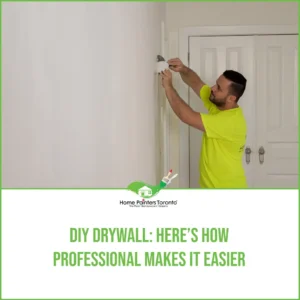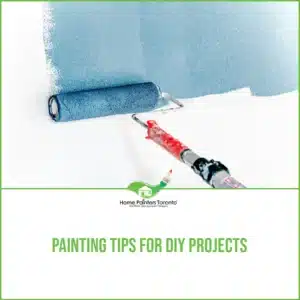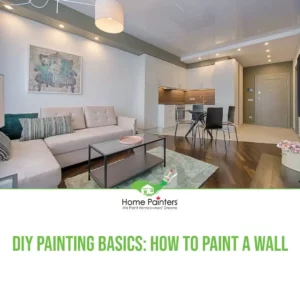
Embarking on a DIY house painting project can be an exhilarating journey, transforming the ambiance of your space with just a few coats of paint. However, like any worthwhile endeavour, success is in the preparation and the tools you choose. In this comprehensive guide, we’ll examine the must-have tools for any DIY paint job, ensuring you achieve a flawless finish that rivals professional work.
DIY Painting Wall
Use wall painting techniques to add some colour and flair to a drab room. Painting is an easy way to bring a room back to life. By using a few special techniques, you can make your DIY painting wall job look like an expensive, professionally done project.
Here are a few classic decorative wall painting techniques. With a little patience and willingness, you can really punch up the design of your rooms. Even on a small budget.
Sponging
Sponging involves using a sponge to create a random pattern on the wall. It gives your room a little depth and texture. You can experiment with colours and glaze to create a subtle or dramatic effect. Sponging is a good way to hide some imperfections in your walls, as the random pattern will help them blend in.
Stenciling and Stamping
Learning how to stencil or stamp is a bit more difficult than the previous two techniques, and you will need a few more tools and a lot more patience. You can use stamping or stencilling to create an effect similar to wallpaper.
Rag Painting
In rag painting, rags are used to apply paint to create a marbled effect. Dip a rag into your chosen colour, shake off the excess, and use the rag to dab on the paint. The pattern can be random, but your dabs should not be widely scattered. This will help create a good marbled look. Traditionally, the base coat should be a few shades lighter than the color used for the rag work, but you can experiment with the style of your choosing.
Dragging
Dragging is a simple technique that changes the texture and appearance of flat wall paint. Drag a dry brush, sponge or rag over freshly applied paint in different directions and patterns to change the look and feel of the wall.
Stippling
Stippling uses a special stippling brush or a towel to dab at freshly applied glaze on the wall. It gives a subtle, polka-dot texture to the walls. Apply the same glaze that you would use for sponge painting directly to the wall with a brush or roller, then go over it with a stippling brush or towel, tapping the wall quickly and consistently until you get the effect you want.
Wood Graining
Give any wall in your home the appearance of painted wood by adding a faux wood grain. Dip plastic or metal combs of different shapes into a wet glaze, then drag the comb through the fresh paint on the wall. Try moving the comb in various directions and mixing up the combs used in one section to create a realistic wood grain.
Painting Equipment List
Painting your house is always easier when you are prepared in advance
Before you start planning a Do-It-Yourself paint for your home project, you have to collect painting tools to get the best possible result. Here is a list of some of the most important painting tools you will need to complete a Do Yourself job.
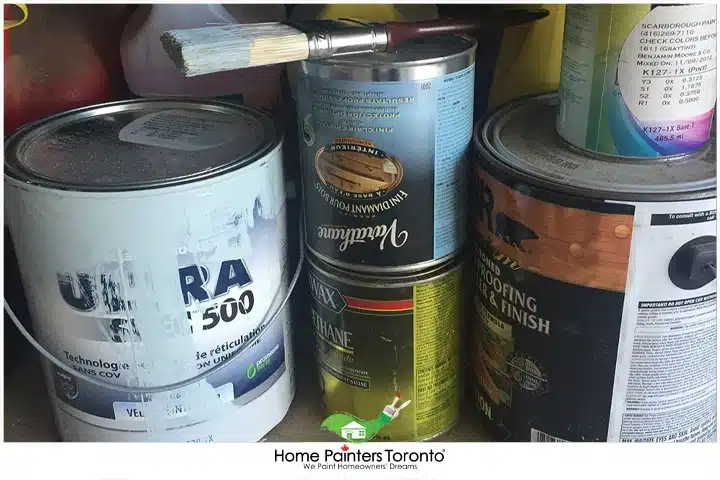
PAINTING THE ROOM
House Painting Tools and Equipment:
- Interior paint primer (one that’s suitable for the paint you’re using)
- Interior paint – either oil or emulsion
- Paint kettle and paint can opener (or flat-head screwdriver)
- Paint roller set: paint roller, sleeve and tray
- Paint brushes
- Radiator brush
- Paint roller extension pole
- Plastic bucket and sponge
- Stepladder
House painting materials list
Painting Brushes:
There are many types of painting brushes that professional painters use to make the best possible final product. Some of the most common are Pure and Synthetic bristle and nylon brushes, softening brushes, dusting, and stencil brushes. Each brush has its own purpose and creates a different kind of result. A combination of high-quality brushes from your local hardware or paint store can help you create the ambiance you are looking for in your home.
Painting Brush cleaners:
Using paint brush cleaners can protect your paintbrushes from damage caused by leftover paint. You can purchase brush cleaners from your local hardware or any local paint store as well.
Drop Cloth:
- What is a drop cloth for? A drop cloth is intended to protect your floor and furniture from any damage caused by dripping or splashing paint during the painting process.
- How do you store drop cloth? You can store a drop cloth along with your other painting supplies
- What is it made of? Drop cloths are made from heavy-duty canvas so that it absorb most paint spills and splatter
Painters Tape:
This special low-tack tape is used to protect the trim from getting paint on them as well as to keep painters’ lines nice and sharp. You can get painter’s tape from your local hardware store or paint store as well.
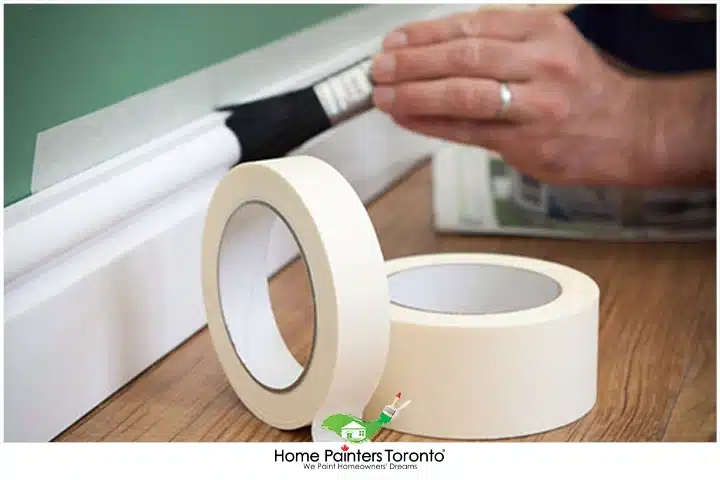
Paint Rollers:
Most paint stores carry a variety of paint rollers and roller covers designed to help you cover larger areas in short periods of time. Each type of paint roller has its own purpose and will produce a slightly different application effect.
Tools needed to paint house exterior
Painting a house requires more tools than you might think. But making the effort to gather the right ones to prep and finish exterior walls can save time and, in the end, offer a more professional result. These are the painting tools and their uses;
A Multipurpose Tool
It’s nice when you find a tool that can do the job of two. But what about five? A multipurpose painter’s tool, sometimes known as a 5-in-1 tool, is essential for the rounds of prep work that must take place before painting a home’s exterior. And it fits easily into a pocket. Among its many features
Ladder
If you’d like your new paint job to reach higher than the 6-foot (1.8-meter) mark, you’re going to need a ladder.
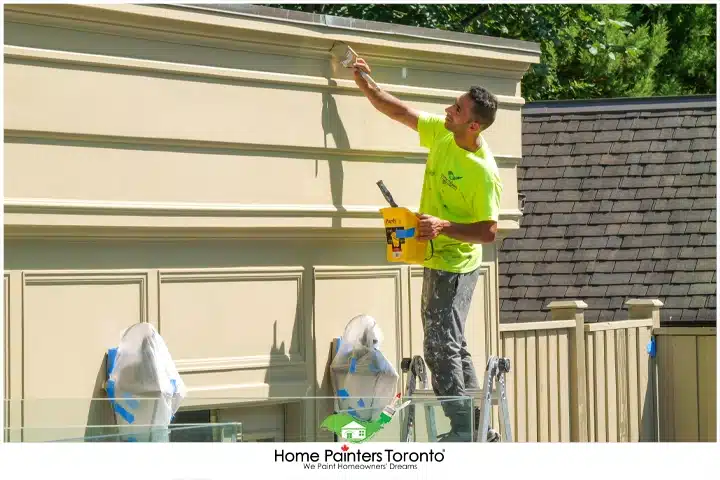
Drop Cloths
Some professional painters recommend drop cloths because they let water run through while still catching paint chips. They’re also less likely to rip.
Caulk Gun
Caulking up holes in your exterior walls is an important step in the pre-painting process. And so is choosing the right caulk gun. There are three main types: manual, battery-powered and pneumatic.
Roller Screen and Tray
A roller screen is essentially a metal grate that fits vertically into your paint bucket and is a handy way to get rid of excess paint on your roller.
Paintbrushes
Paintbrush there are two main types: natural bristle and synthetic bristle. Natural bristle brushes often are made of animal hair, including black or white hog hair, and have a soft texture for fine finishes. Natural bristles can hold a lot of oil-based paint without absorbing it.
While a natural bristle brush is good for applying a coat of primer or oil-based paint, it isn’t the best choice if your paint is latex (water-based) because it will absorb up to 40 percent of its own weight in water, making the brush too soft to paint properly
Paint Rollers
Rollers allow you to work faster than with brushes alone. For large areas of shingles, stucco or brick, opt for a 9-inch (23-centimeter) roller with a half-inch nap.
For narrow spaces, or for applying to large areas of siding, a 7-inch (18-centimetre) roller will be a better fit
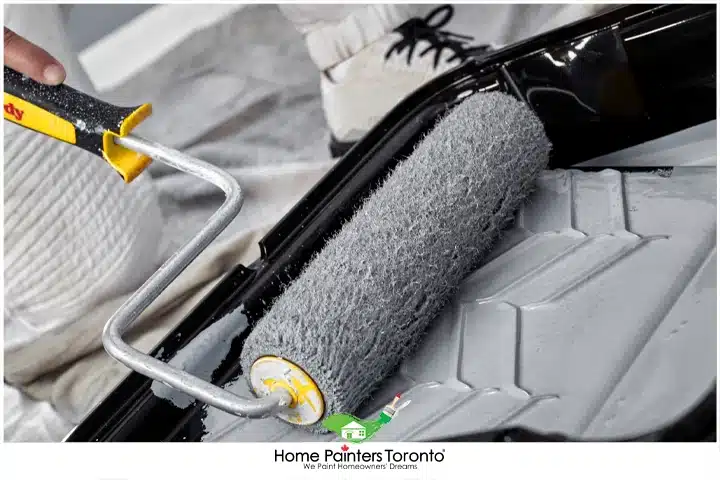
Paint Sprayer
Most high-volume paint pros use sprayers to apply exterior paint. The method is up to 10 times faster than brushing and four times faster than rolling. Plus, paint sprayers can offer a consistent finish, even in tight areas. Most paint stores carry a variety of paint rollers and roller covers designed to help you cover larger areas in short periods of time. Each type of paint roller has its own purpose and will produce a slightly different application effect.
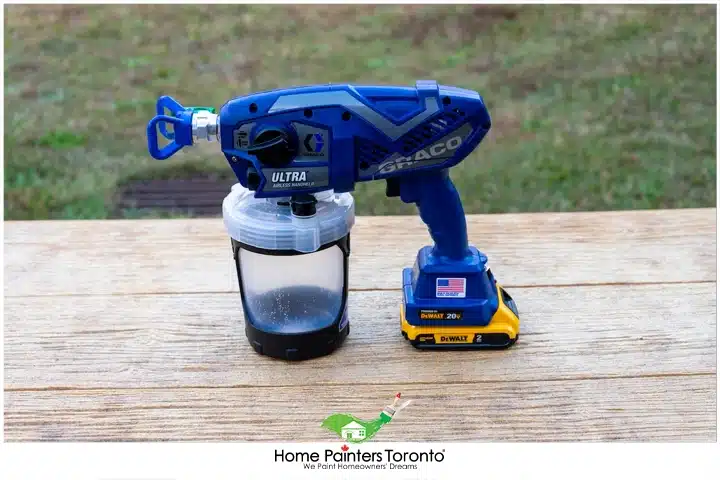
Tips for a Successful DIY Paint Job
- Preparation is Key: Spend ample time prepping your surfaces for painting. This includes cleaning, sanding, and priming where necessary.
- Quality Over Cost: While it might be tempting to save money on materials, investing in high-quality paint and tools can significantly impact the finish and longevity of your paint job.
- Patience Pays Off: Allow sufficient drying time between coats and don’t rush the process. A rushed job often leads to unsatisfactory results.
Conclusion
A DIY paint job can be a fulfilling project that breathes new life into your home. With the right tools in hand and an emphasis on preparation and patience, you’ll be well on your way to achieving a professional-quality finish. Remember, balancing functionality, aesthetics, and cost-effectiveness is key to making informed choices that meet your project needs.
Many people discover after the expenses and hassle of getting all of the paint and supplies, along with the time investment that is required to complete a DIY painting job, that hiring Professional Painters in Toronto is more convenient for their busy lives. If you need some help, our professional home painters can make a house call and help you complete your Interior Home painting in Toronto quickly and effectively with little mess.
MORE INTERESTING BLOGS RELATED TO
“DIY BASICS – TOOLS TO PAINT YOUR HOME”
If you’re thinking of doing some home interior painting but don’t want to do the work yourself, let our interior painters help! Even if you are undecided, professional house painters can help you with any problems or questions you may have.
If the work involved sounds like it involves too much time and energy to do yourself, call 416.494.9095 or email [email protected] for a FREE quote. And don’t forget to follow us on all our social channels below as well!


